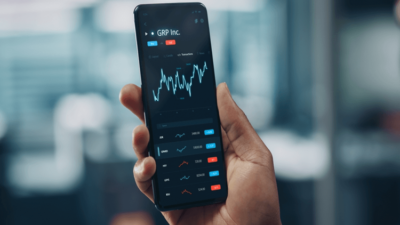The global pandemic brought about the worst recession in the United States since the Great Depression. Yet, according to research by Planet Money, unexpectedly, it has been a period in which entrepreneurs have created startups in record numbers. This will come as a shock to many people, but is not entirely unexpected. There are many examples of businesses that were started during a recession, including Microsoft, General Motors and General Electric. A recent study shows that startup creation continues its growth surge. In this article, we will discuss what the US startup boom means for the economy.
As with other parts of the economy, the first few months of the pandemic saw a decline in applications for new businesses. The second half of the year, however, saw a massive surge in new business applications. So large was the surge that 2020 ended off as the best year in terms of business creation, since the Census Bureau began tracking those numbers in 2004. May ended off with half a million applications, making that the second highest month since record keeping began. July is the highest month on record. The pandemic era has seen 6 million new business applications filed. The boom is across the range of business structures, from sole-proprietorships to corporations.
Entrepreneurs could be responding to opportunities that have resulted from disruptions to the nature of work, supply-chain constraints as the economy reopens, among other problems-that-are-opportunities. For instance, many brick-and-mortar retail firms suffered during the pandemic while ecommerce businesses such as Amazon and Shopify thrived. In-person businesses suffered and declined and internet businesses thrived. This shift to digital has created massive opportunities and entrepreneurs have responded. Retail accounts for a third of the new business applications.
Delivery services, trucking and warehousing have all experienced a boom in new business applications. Again, this makes sense given the context of the pandemic. Entrepreneurs are responding to heightened demand and the accelerated adoption of technologies that the pandemic brought about.
The pandemic forced businesses and their employees to adopt remote work as part of how they conducted business. This had an impact not just on the nature of work but on where people choose to live. If you don’t need to be at a specific location to work, then you can live anywhere. This has led to the birth of so-called “Zoom Towns”. These towns have experienced booms of thir own, as remote workers have spent on housing (pushing housing prices up, food and other essentials. A look at the data shows that food and accommodation are a big source of growth in new business applications.
The data also shows a rise in the number of businesses that offer solutions enabling remote work.
There are two theories as to the surge in new business applications.
The first theory argues that though the surge in new business applications is a good thing, it has a darker side. The pandemic forced businesses to abandon in-person business or, when it became acceptable again, to embrace social distancing. This hit many businesses hard, as we have said, while giving oxygen to others, such as ecommerce businesses like Amazon and Shopify, video conferencing platforms such as Zoom, delivery apps such as Doordash, and Uber Eats, mask and sanitizer businesses, and others. Now, the dark side of this view is that some of the changes and demand brought about by the pandemic may only be transitory. As the economy opens up and the vaccine rollout progresses, we could see a weakened demand for the solutions that these new businesses are offering. Indeed, we have already seen that as we return to normal, there is a lot of pent-up demand for bars, restaurants, salons and other such businesses, businesses which, at the height of the pandemic, were struggling.
It’s hard to forecast what the future will bring. This theory warns us that the future is not necessarily “the pandemic but without masks or social distancing”. There is a possibility that the future looks more like the pre-pandemic normal. In which case, many of the new businesses will struggle or even fail.
AT this stage, there is not a lot of information about what these new businesses are doing and it’s hard to say how big any of them will get. Indeed, we don’t have enough data as to the businesses that folded during the pandemic. The new businesses could just be filling a hole left by the companies that closed during the pandemic. When you look at the data, it supports the view that we are simply swinging back to the pre-pandemic era. Most new businesses were started at the beginning and at the end of the pandemic.
There is a second theory, however. This theory holds that the surge in new business applications is a signal that the economy is undergoing a fundamental change and a transformation into something better. It has been said that the pandemic forced a decade’s worth of tech adoption in just 10 months. That transformation is still ongoing and has unleashed, in many cases, a torrent of business activity that was hard to imagine just before the pandemic began. Tech adoption has shown that there are so many different ways that a business can be run and it has sparked a plethora of ideas. As the economist Eric Brynjolfsson said last year in a discussion with NPR, business operations tend to be inert, with people not really questioning how businesses should or can be run. Without a shock, people tend to do things the way they have always been done. How many people, just before the pandemic, believed it was possible to run so much business through remote work? Businesses have been forced to adopt new technologies to support remote work and other features that were necessary to survive during the pandemic. These changes have resulted in new possibilities and greater productivity after years of stagnancy. The data seems to indicate that we will soon see productivity gains in the economy. Ultimately, when there has been such a sustained increase in new business applications, it has been a good thing for the economy, at least in terms of innovation, job creation and productivity growth.
Discover more about how you can set up a new business using a holding company and start your new business!













Comments